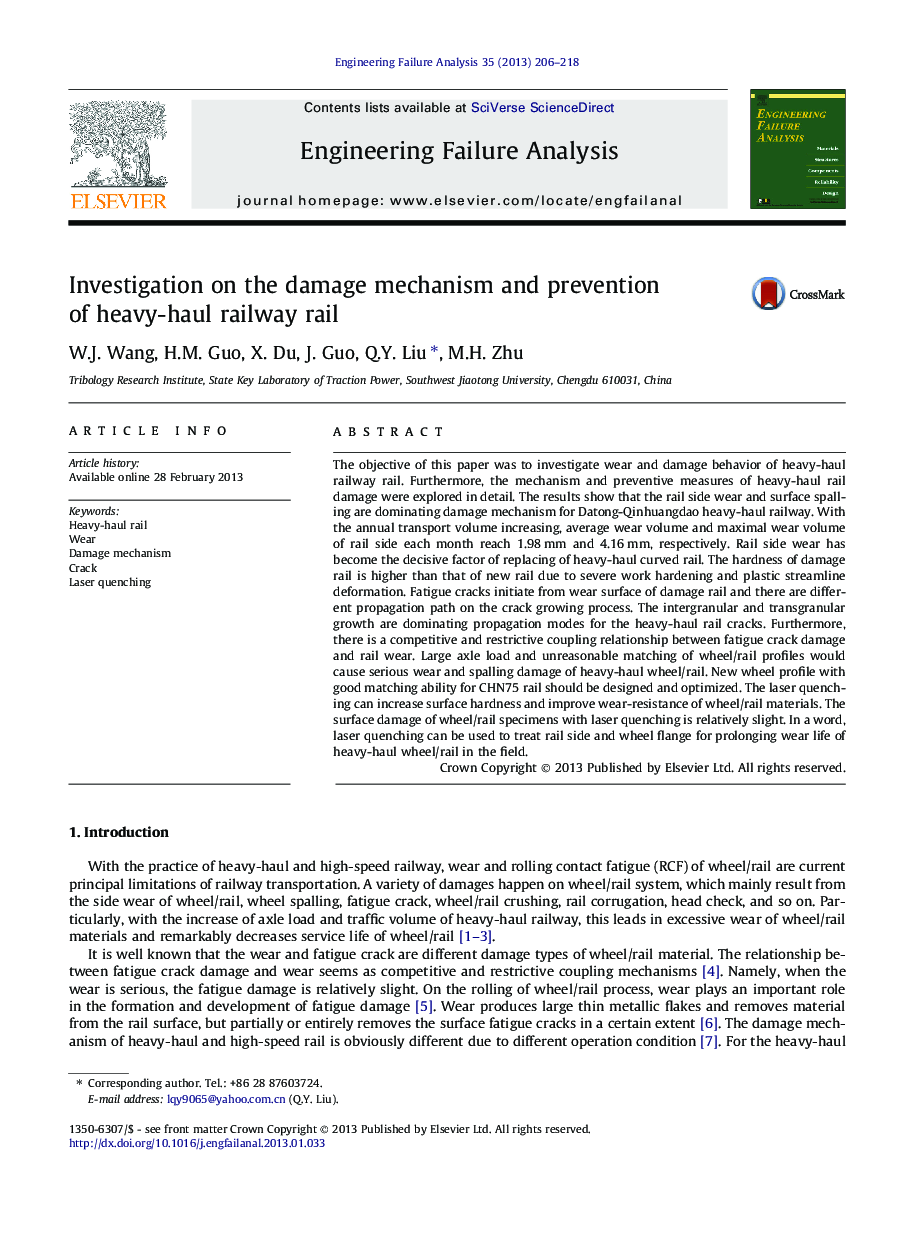| Article ID | Journal | Published Year | Pages | File Type |
|---|---|---|---|---|
| 773986 | Engineering Failure Analysis | 2013 | 13 Pages |
The objective of this paper was to investigate wear and damage behavior of heavy-haul railway rail. Furthermore, the mechanism and preventive measures of heavy-haul rail damage were explored in detail. The results show that the rail side wear and surface spalling are dominating damage mechanism for Datong-Qinhuangdao heavy-haul railway. With the annual transport volume increasing, average wear volume and maximal wear volume of rail side each month reach 1.98 mm and 4.16 mm, respectively. Rail side wear has become the decisive factor of replacing of heavy-haul curved rail. The hardness of damage rail is higher than that of new rail due to severe work hardening and plastic streamline deformation. Fatigue cracks initiate from wear surface of damage rail and there are different propagation path on the crack growing process. The intergranular and transgranular growth are dominating propagation modes for the heavy-haul rail cracks. Furthermore, there is a competitive and restrictive coupling relationship between fatigue crack damage and rail wear. Large axle load and unreasonable matching of wheel/rail profiles would cause serious wear and spalling damage of heavy-haul wheel/rail. New wheel profile with good matching ability for CHN75 rail should be designed and optimized. The laser quenching can increase surface hardness and improve wear-resistance of wheel/rail materials. The surface damage of wheel/rail specimens with laser quenching is relatively slight. In a word, laser quenching can be used to treat rail side and wheel flange for prolonging wear life of heavy-haul wheel/rail in the field.
► We investigates the wear and damage behavior of heavy-haul railway rail. ► Serious side wear and surface spalling are dominating damage for heavy-haul rail. ► Fatigue cracks have different formation and propagation path. ► Laser quenching can treat rail side and wheel flange for prolonging wear life.
